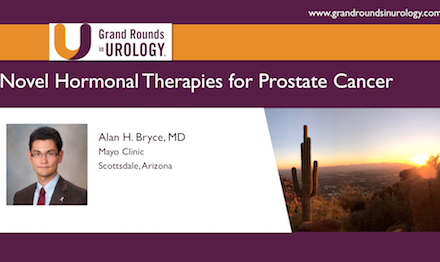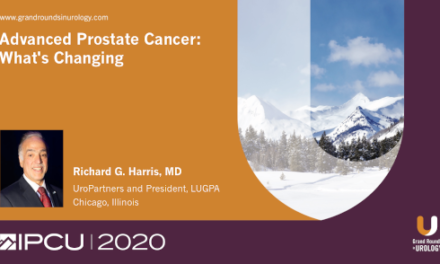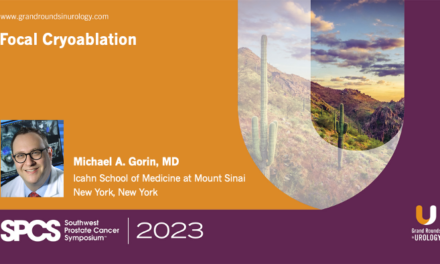Daniel G. Petereit, MD, FASTRO, presented “ABS Initiatives to Enhance Training the Next Generation of Brachytherapists” as part of a course on Prostate Brachytherapy released in 2021 and created by the American Brachytherapy Society in partnership with Grand Rounds in Urology.
How to cite: Petereit, Daniel G. “ABS Initiatives to Enhance Training the Next Generation of Brachytherapists.” September 2021. Accessed Jul 2024. https://grandroundsinurology.com/abs-initiatives-to-enhance-training-the-next-generation-of-brachytherapists/
ABS Initiatives to Enhance Training the Next Generation of Brachytherapists
As part of a special course on brachytherapy for prostate cancer from the American Brachytherapy Society (ABS) and Grand Rounds in Urology, Daniel G. Petereit, MD, FASTRO, ABS Chairman of the Board and a radiation oncologist with Avera Cancer Care Institute in Sioux Falls, South Dakota, and Regional Cancer Care Institute in Rapid City, South Dakota, overviews the current state of brachytherapy and discusses the initiatives of the ABS meant to educate physicians on administering the treatment. He discuses how diminished cure rates foro cervical and prostate cancer patients are occuring due to nationwide declining use of brachytherapy. Dr. Petereit states that the decline is due to competing modalities and active surveillance. He shows that the decline in use of radiation dropped from 38% to 54% between 2004 and 2012 despite external beam radiation (EBRT) and brachytherapy use in tandem supporting the highest possibility of survival over the course of ten years when compared to prostatectomy or EBRT alone. Dr. Petereit reviews our preparation for teaching residents, displaying how there has been a 15% decline in academic centers performing brachytherapy. He then discusses the ASCO Clinical Care Options guidelines that recommend Brachytherapy boost with either high dose rate (HDR) or low dose rate (LDR) for men with intermediate and high-risk disease. Dr. Petereit outlines the ASCENDE RT trial, stating how it shows high recurrence free survival of 83% at nine years in the LDR boost cohort but high rates of urethral stricture at 14-23%. In response to the high rates of urethral stricture, he analyzes data on HDR brachytherapy that shows lower rates of urethral stricture at 2-5%. Dr. Petereit overviews the biochemical definition of cure after brachytherapy which is 4 years after treatment based on 1-2% rates of recurrence. He concludes by reviewing the barriers to brachytherapy utilization and how they can be overcome, primarily through ABS initiatives such as the Brachy Summit, annual meetings, and the “300 in 10” initiative to train 300 teams of brachytherapy residents in 10 years, among others.
For more on brachytherapy, check out the first module of the free Prostate Brachytherapy course from GRU and the American Brachytherapy Society.
ABOUT THE AUTHOR
Dr. Petereit received his BA from Augustana University in South Dakota and his MD from the University of South Dakota Medical School. He then completed his residency in radiation oncology at the University of Wisconsin-Madison. Dr. Petereit is a professor at the Sanford School of Medicine at the University of South Dakota and an adjunct associate professor at the University of Wisconsin School of Medicine and Public Health.
Dr. Petereit treats all types of cancer and specializes in brachytherapy. He is also a board examiner for the American Board of Radiology in gynecologic oncology. He has worked with the International Atomic Energy Agency (IAEA) to develop treatment guidelines for cervical cancer and the use of brachytherapy for other malignancies.
Dr. Petereit is a principal investigator on a number of grants funded by the National Cancer Institute and his clinical research has focused on gynecologic cancer, prostate cancer, brachytherapy, cancer disparities, and intensity modulated radiotherapy. Additionally, he has over 80 publications in peer-reviewed cancer journals and is an editor for Frontiers in Oncology. His professional goals include providing state-of-the art cancer care for patients throughout the region. To that end, Dr. Petereit developed the NCI-funded Walking Forward (WF) Program in 2002 to address high cancer incidence and mortality rates among American Indians in Western South Dakota.




